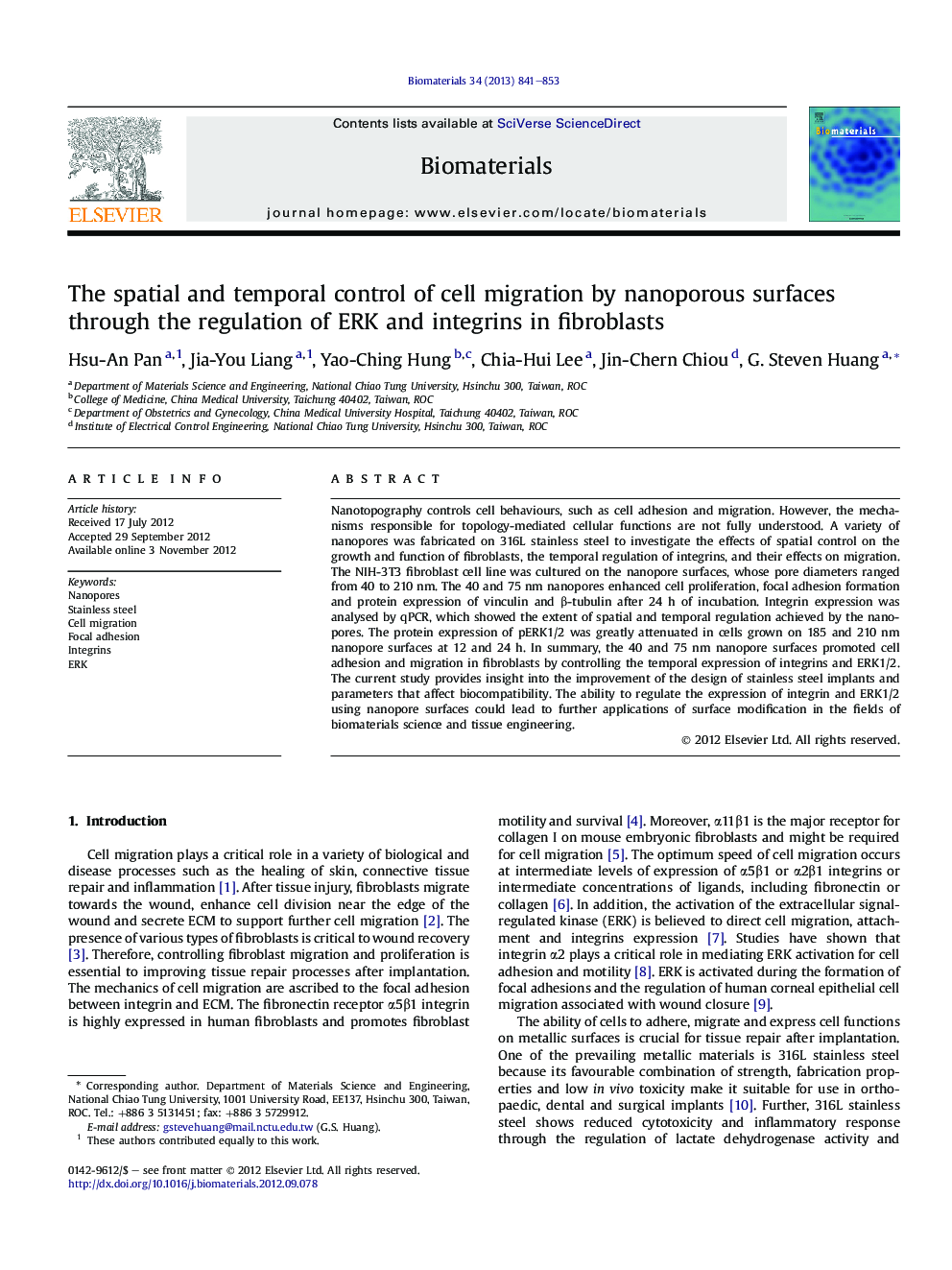| Article ID | Journal | Published Year | Pages | File Type |
|---|---|---|---|---|
| 10229265 | Biomaterials | 2013 | 13 Pages |
Abstract
Nanotopography controls cell behaviours, such as cell adhesion and migration. However, the mechanisms responsible for topology-mediated cellular functions are not fully understood. A variety of nanopores was fabricated on 316L stainless steel to investigate the effects of spatial control on the growth and function of fibroblasts, the temporal regulation of integrins, and their effects on migration. The NIH-3T3 fibroblast cell line was cultured on the nanopore surfaces, whose pore diameters ranged from 40 to 210 nm. The 40 and 75 nm nanopores enhanced cell proliferation, focal adhesion formation and protein expression of vinculin and β-tubulin after 24 h of incubation. Integrin expression was analysed by qPCR, which showed the extent of spatial and temporal regulation achieved by the nanopores. The protein expression of pERK1/2 was greatly attenuated in cells grown on 185 and 210 nm nanopore surfaces at 12 and 24 h. In summary, the 40 and 75 nm nanopore surfaces promoted cell adhesion and migration in fibroblasts by controlling the temporal expression of integrins and ERK1/2. The current study provides insight into the improvement of the design of stainless steel implants and parameters that affect biocompatibility. The ability to regulate the expression of integrin and ERK1/2 using nanopore surfaces could lead to further applications of surface modification in the fields of biomaterials science and tissue engineering.
Related Topics
Physical Sciences and Engineering
Chemical Engineering
Bioengineering
Authors
Hsu-An Pan, Jia-You Liang, Yao-Ching Hung, Chia-Hui Lee, Jin-Chern Chiou, G. Steven Huang,
